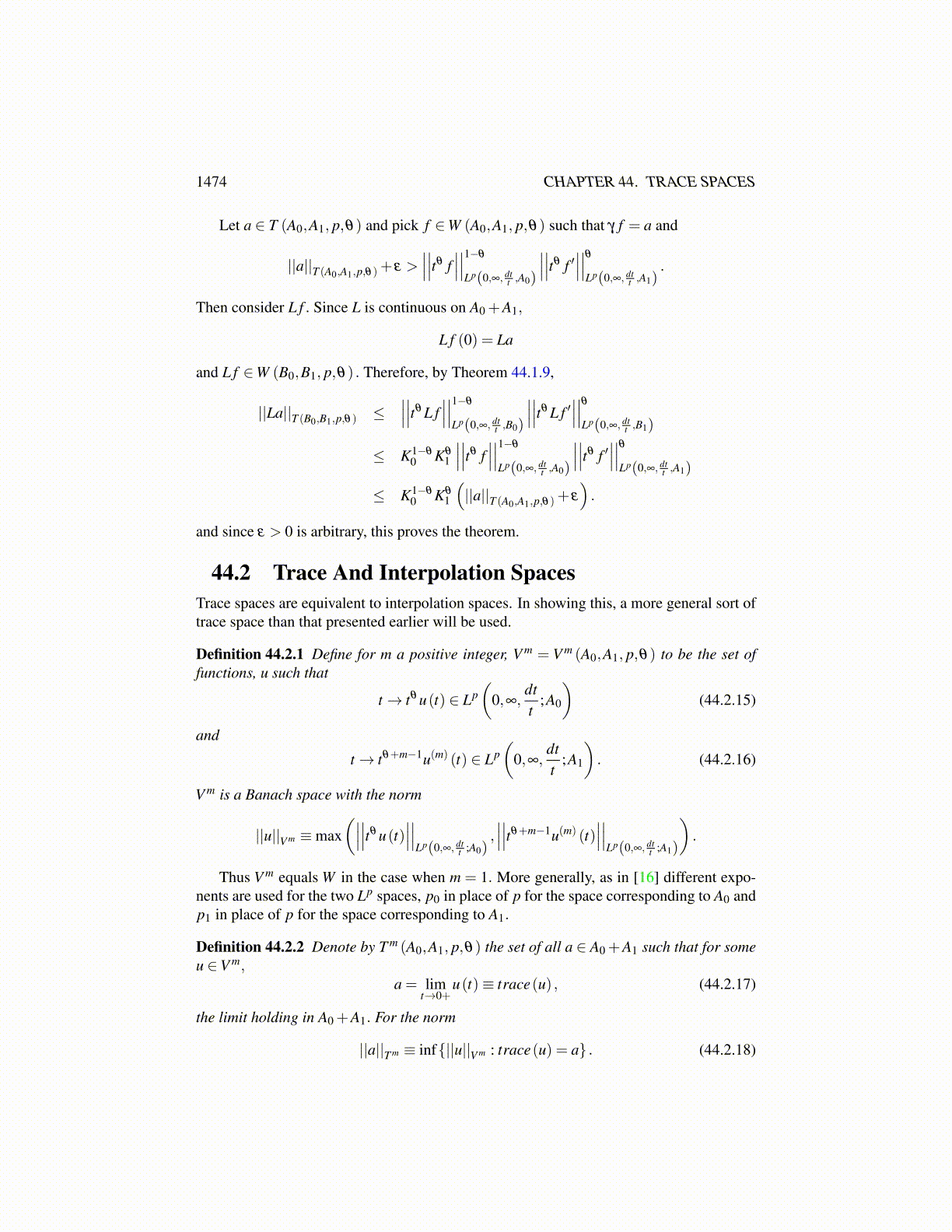
1474 CHAPTER 44. TRACE SPACES
Then as before,∣∣∣∣∣∣tθ fλ
∣∣∣∣∣∣Lp(0,∞, dt
t ;A0)= λ
−θ R,∣∣∣∣∣∣tθ ( fλ )
′∣∣∣∣∣∣
Lp(0,∞, dtt ;A1)
= λ1−θ S. (44.1.9)
so that || f ||W = max(R,S) . Then, changing the variables, letting λ = R/S,∣∣∣∣∣∣tθ fλ
∣∣∣∣∣∣Lp(0,∞, dt
t ;A0)=∣∣∣∣∣∣tθ ( fλ )
′∣∣∣∣∣∣
Lp(0,∞, dtt ;A1)
= R1−θ Sθ (44.1.10)
Since fλ (0) = a, fλ ∈W, and it is always the case that for positive R,S,
R1−θ Sθ ≤max(R,S) ,
this shows that
||a||T ≤ max(∣∣∣∣∣∣tθ fλ
∣∣∣∣∣∣Lp(0,∞, dt
t ;A0),∣∣∣∣∣∣tθ ( fλ )
′∣∣∣∣∣∣
Lp(0,∞, dtt ;A1)
)= R1−θ Sθ ≤max(R,S) = || f ||W < ||a||T + ε,
the first inequality holding because ||a||T is the infimum of such things on the right. Thisshows 44.1.6.
It remains to verify 44.1.7. To do this, let ψ ∈C∞ ([0,∞)) , with ψ (0) = 1 and ψ (t) = 0for all t > 1. Then consider the special f ∈W which is given by f (t) ≡ aψ (t) wherea ∈ A0 ∩A1. Thus f ∈W and f (0) = a so a ∈ T (A0,A1, p,θ) . From the first part, thereexists a constant, K such that
||a||T ≤∣∣∣∣∣∣tθ f
∣∣∣∣∣∣1−θ
Lp(0,∞, dtt ;A0)
∣∣∣∣∣∣tθ f ′∣∣∣∣∣∣θ
Lp(0,∞, dtt ;A1)
≤ K ||a||1−θ
A0||a||θA1
This shows 44.1.7 and the first inclusion in 44.1.8. From the inequality just obtained,
||a||T ≤ K((1−θ) ||a||A0
+θ ||a||A1
)≤ K ||a||A0∩A1
.
This shows the first inclusion map of 44.1.8 is continuous.Now take a ∈ T. Let f ∈W be such that a = f (0) and
||a||T + ε > || f ||W ≥ ||a||T .
By 44.1.3,||a− f (t)||A0+A1
≤Cν t1−ν p′ || f ||W
where 1p +ν = θ , and so
||a||A0+A1≤ || f (t)||A0+A1
+Cν t1−ν p′ || f ||W .